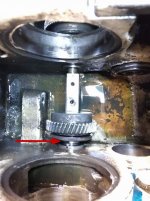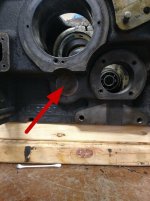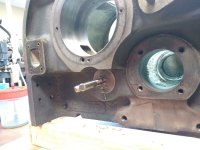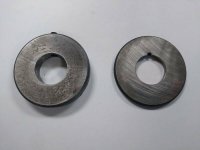Hobby Racer
Aluminum
- Joined
- Apr 18, 2015
I am trying to completely disassemble the headstock on my 1942 Monarch 10EE and I am a bit stumped on how to remove the reverse idler gear stub shaft. Its the small hollow stub shaft that the clutch rack shaft slides into.
Here is a picture from the top.

Here it is from the back. There is plug that appears to be pressed in where the shaft goes.

Here is a picture from the top.

Here it is from the back. There is plug that appears to be pressed in where the shaft goes.














